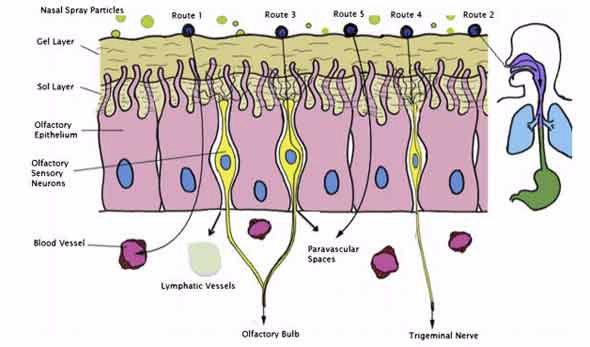ANSTO is participating in a $1 million Australian Research Council project to understand how the hormone oxytocin may influence human cognition and behaviour and explain its potential usefulness as a treatment for autism and other disorders.
Life sciences researchers will apply ultra-sensitive imaging techniques using radio-labelling probes in combination with positron emission tomography (PET) to determine the pathway that oxytocin takes to reach receptors in the human brain.
They will be developing a new oxytocin radiopharmaceutical that behaves like natural oxytocin in the body.
 |
| Early studies of oxytocin were done on primates, such as females gorillas and their young. |
Oxytocin, a neuropeptide, influences a range of physiological functions. Research has confirmed its critical role in the regulation of social behaviour in mammals. There is direct evidence that oxytocin interacts with social and reward neural pathways to alter social behaviour, including social recognition, relationship formation and long-term emotional attachment.
Oxytocin appears to regulate mechanisms that underlie aspects of social cognition in humans, too, but there have been few in-life measurements so far on how and where it does this.
“If the oxytocin neural pathways can be identified non-invasively in the human brain, it may be possible to link these areas to their regulation of human behaviour,” said Professor Richard Banati, who is a co-investigator on the project led by Associate Professor of Psychiatry Adam Guastella of the University of Sydney and the Brain and Mind Centre.
Guastella has been studying the role of oxytocin to determine whether it can be used to treat autism, a range of mental health problems and substance dependence. In the world’s largest trial of oxytocin for autism, he found that when administered externally through a nasal spray it improved trust, altruism, emotion recognition and increased sensitivity to eye gaze.
Although studies have reported favourable effects on social cognition and behaviour, there has been variation and variability in the types of responses to oxytocin among individuals and between studies.
“At this point, we need a better understanding of the underlying neurobiology to progress further with investigations using oxytocin. We know the social context that contributes to behaviour and some of the likely biological mechanisms but we don’t fully understand how they interact,” said Banati.
“Notably, apparently simple knowledge, such as how exactly the oxytocin reaches the target receptor is still an enigma.”
In previous research published in Psychoneuroendocrinology in 2013, Guastella, Banati and others had a closer look in particular at the nasal administration of oxytocin.

They reported that synthetic oxytocin, which adheres to nasal mucus, can potentially be transported by five different routes from the nasal cavity to the brain (see image above): 1) blood vessels into the circulatory system 2) swallowed mucus in to the gastroenterological system 3) olfactory (smell) pathways to cerebrospinal fluid of the brain 4) via the trigeminal nerve to the brain stem or 5) mucus that enters paravascular spaces to interstitial spaces in the brain.
Oxytocin is administered as a nasal spray because it is a very large molecule that does not readily cross the blood brain barrier (if given intravenously). Oral administration is not suitable due to metabolism in the gastrointestinal tract. The nasal cavity is the only location in the body that provides a direct pathway to the central nervous system.
It is not clear which route the drug takes from the nasal cavity and not all routes have been demonstrated in human studies but the investigators suspect that the olfactory pathways and trigeminal nerve are the most promising regions.
It is also extremely difficult to detect and measure levels of oxytocin in the human brain non-invasively.
“Only nuclear techniques, such as radiolabelling in combination with positron emission tomography (PET), can be used to detect such trace amounts of these molecules without perturbing or altering the underlying dynamics of the system, which is an important consideration,” said Banati.
By attaching a short-lived radioisotope to oxytocin, they will create a safe radiopharmaceutical that can be imaged by PET, which detects positrons given off by the radioisotope.
“In partnership with co-investigating researchers, we will be relying on the expertise of Associate Professor Marie Claude Gregoire, an investigator on the project, and the ANSTO radiochemistry team to design and supervise the PET CT imaging,” said Banati.
The radiopharmaceutical will be administered by nasal spray and intravenously as part of the study.
They also hope to learn where and how much oxytocin is picked up by specific receptors in the brain.
“Depending on the area of the brain involved and the time course of delivery action by oxytocin, it may give us a link to the type of cognition and behaviour impacted by neural activity from that region,” explained Banati.
The research also includes an assessment of physiological response to drug treatment and its effect on cognitive functioning, coordinated by the Brain and Mind Centre under Professor Ian Hickie.


